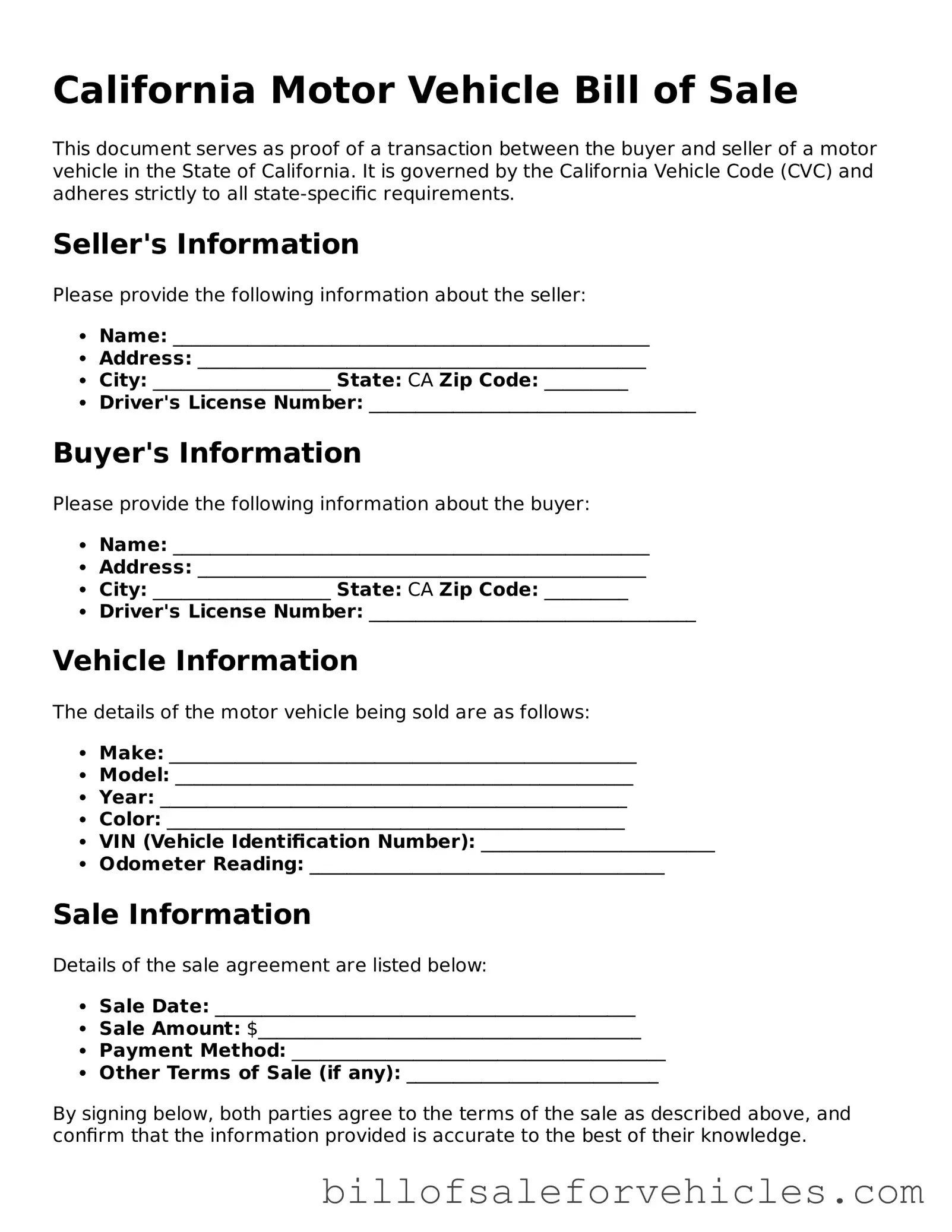What is a California Motor Vehicle Bill of Sale form?
A California Motor Vehicle Bill of Sale form is a legal document that records the sale and purchase of a motor vehicle within the state of California. It serves as evidence that the vehicle's ownership has transitioned from the seller to the buyer. This document includes important information such as the vehicle's description, the agreed-upon purchase price, and the identities of both the buyer and seller.
Is the California Motor Vehicle Bill of Sale form required for vehicle registration?
Yes, in many cases, the California Motor Vehicle Bill of Sale form is required for vehicle registration. When registering a recently purchased vehicle, the California Department of Motor Vehicles (DMV) often requests this document as part of the evidence showing a change of ownership. However, requirements can vary, so it is advisable to consult the DMV for specific circumstances.
What information do I need to include in the form?
The California Motor Vehicle Bill of Sale form must include the following information: the date of sale, full names and addresses of both the seller and the buyer, a detailed description of the vehicle (including make, model, year, and Vehicle Identification Number [VIN]), the purchase price, and signatures from both the buyer and seller, acknowledging the terms and conditions of the sale.
Do both parties need to sign the California Motor Vehicle Bill of Sale form?
Yes, for the document to be legally binding, both the seller and the buyer must sign the California Motor Vehicle Bill of Sale form. Each signature serves as an official agreement to the terms of the sale and an acknowledgment of the transaction.
How can I obtain a California Motor Vehicle Bill of Sale form?
The California Department of Motor Vehicles (DMV) provides the Motor Vehicle Bill of Sale form. It can be downloaded from the DMV’s official website or obtained in person at a DMV office. Alternately, legal document templates found online can be used, provided they contain all required information as specified by California law.
What steps should I take after completing the form?
After the California Motor Vehicle Bill of Sale form is completed and signed, it's important for both the buyer and the seller to keep a copy for their records. The buyer will need to present this form to the DMV when registering the vehicle. Additionally, the seller should report the sale to the DMV to update their records and release liability for the vehicle. This step is crucial in ensuring that all legal responsibilities regarding the vehicle are transferred to the buyer.
